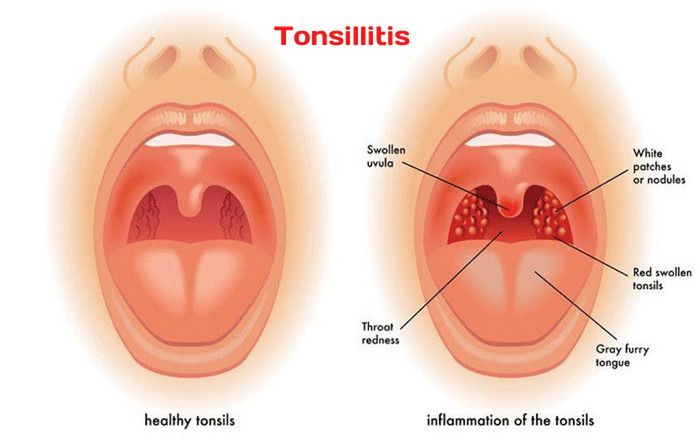

Child Health
Dr Shan Narayanan
What are Adenoids and Tonsils?
An adenoid is a lymphoid tissue between the back of the nose and the throat. Tonsils are two small masses of lymphoid tissue one on each side of the root of the tongue.


Adenotonsillitis is the inflammation of the tonsils and adenoids.
What Causes Adenotonsilitis?
Adenotonsilitis is caused by a viral or bacterial infection. Adenovirus, Influenza Virus, Parainfluenza and Streptococcus species of bacteria are the commonest organisms involved.
How is Adenonsilitis Spread to Other People?
The virus and bacteria that cause Adenotonsilitis are airborne and thus easily spread to other individuals.


The symptoms are fever, sore throat, swollen tonsils that are red and may have white spots on them. This is associated with coughing, headache, and swollen lymph nodes. At times children may have nausea, vomiting, hoarseness, and bad breath.
If there is adenoiditis as well, children have blocked nose, nasal discharge, snoring and mouth breathing.
In the event the tonsils and adenoids are very large and obstruct (block) the airway, the child may have a sudden difficulty to breathe while she is asleep. This suddenly awakens her. This phenomenon is called Obstructive Sleep Apnoea.
How is Adenotonsilitis Diagnosed?
Your child’s doctor will ask her symptoms and examine her to make a diagnosis.
How is Adenotonsilitis Treated?
Taking paracetamol or ibuprofen helps to reduce fever and pain. Gargle and/or lozenges help to reduce pain in older children. Encourage her to drink plenty of fluids and rest. At times symptomatic treatment for cough, blocked nose and nasal discharge may be needed.
If bacterial infection is suspected, a course of antibiotics is given. If this treatment does not settle the fever and sore throat than the child will need to be admitted into hospital for intravenous antibiotics.
Most of the time, adenotonsillitis gets better within a week. However, a small number of children have tonsillitis for longer, or it keeps returning. Thus surgical treatment may be needed.
In this situation your doctor will refer you to an Ear Nose and Throat Specialist.
What are the Complications of Adenotonsilitis?
Sometimes complications arise as a result of adenotonsilitis and it is mainly after a bacterial infection.
The possible complications are:
- Middle ear infection known as Otitis Media where the fluid between the eardrum and inner ear becomes infected by bacteria.
- A collection of pus develops between one of the tonsils and the wall of the throat. This is called peritonsillar abscess or Quinsy.
Rarer complications are:
- Obstructive sleep apnoea (as explained earlier)
- Glomerulonephritis 10 to 14 days after streptococcal tonsillitis. This occurs as a result of the body’s immune system’s reaction to the infection.


